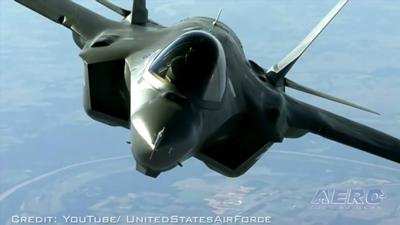The Importance of Beijing Earnest
Provided a crystal-ball by which to glimpse their creation’s future, the bigwigs at Lockheed Martin and the Pentagon might well have forgone Lightning II and instead dubbed the F-35 the Paris Hilton, a conditionally attractive, pedigreed prima donna with no perceptible talent or ability—excepting spending other people’s money and fomenting controversy.

The F-35 is equally deserving of the sobriquet Apollo Creed—a smugly over-confident, garishly American showboat destined to be knocked down by a scrappy underdog and killed outright by an angry Russian.
The history of the F-35 program is a protracted and prosaic amphigory of stratospheric spending, high expectations, sustained hype, under-performance, artful rationale, and diminishing returns punctuated by occasional crashes and frequent groundings.
In 2011, the inchoate F-35 fleet was thrice grounded following failures of aircraft oxygen systems, starter-generators, and APU-like Integrated Power Packs (IPP).
In 2016, peeling and crumbling insulation separating jet fuel from hot, avionics cooling lines saw F-35s again grounded.
In 2018, the crash of an F-35B led investigators to suspect widespread problems with the aircraft’s fuel tubes, thereby prompting the Pentagon to ground its entire F-35 fleet.
In 2020, having identified yet another flaw in the machine’s fuel-system, the Pentagon banned F-35 operations within 25-miles of thunderstorms for fear the jets would start exploding—death of, by, and for Lightning.
In July 2022, the U.S. Air Force grounded the majority of its F-35 fleet due to faulty charges in the Martin-Baker ejection seats with which the aircraft are provisioned.
Comes now September 2022, and a Pentagon mandated suspension of F-35 deliveries owing to the discovery that an alloy integral to magnets in the jet’s turbomachine pumps was produced in China. The use of subject alloy may well constitute a violation of the U.S. Department of Defense’s (DoD) Defense Federal Acquisition Regulation Supplement (DFARS)—a set of restrictions intended to protect the US defense industry from vulnerabilities inherent over-reliance on foreign sources of supply. In essence, the DFARS regulates the origin of raw materials used in the production of U.S. weapons systems and ordnance.
The F-35 Joint Program Office has determined the Chinese alloy presents neither a safety nor a security risk, and that its inclusion in the F-35’s turbomachine pumps in no way exposes the stealthy jet to cyber-attacks or similar Chinese malfeasance. The JPO office further states that an alternative source for the alloy has been identified. Ergo, no plans are in the works to ground the extant F-35 fleet or return already accepted specimens to Lockheed.

It is unclear, however, when Lockheed Martin—the world’s largest military contractor—will recommence deliveries of F-35s sporting magnets made from the newly-sourced alloy. If the Chinese alloy is deemed a violation of defense acquisition regulations, the resumption of deliveries would be predicated upon a national defense waiver—which is to say, a written statement from U.S. Undersecretary of Defense for Acquisition and Sustainment Bill LaPlante asserting acceptance of the F-35s was essential to the national security interests of the United States.
The Defense Contract Management Agency and the F-35 JPO suspended F-35 deliveries on 31 August to allow time for the Defense Department to investigate whether use of the alloy violated the DFARS. It has thus far been determined that Honeywell—which manufactures the F-35 turbomachine—was informed by a subcontractor that one of its magnet suppliers had used a cobalt and samarium alloy smelted in China.
Notwithstanding the ongoing investigation, the F-35 JPO has received a formal disclosure of potential noncompliance from the aforementioned subcontractor. Further investigation of the causal factors underlying the subcontractor’s non-compliance are underway with a weather eye toward the alacritous establishment of decisive and durable corrective action.
 Classic Aero-TV: Remembering Bob Hoover
Classic Aero-TV: Remembering Bob Hoover ANN FAQ: Follow Us On Instagram!
ANN FAQ: Follow Us On Instagram! ANN's Daily Aero-Linx (05.15.24)
ANN's Daily Aero-Linx (05.15.24) ANN's Daily Aero-Term (05.15.24):Altimeter Setting
ANN's Daily Aero-Term (05.15.24):Altimeter Setting Aero-News: Quote of the Day (05.16.24)
Aero-News: Quote of the Day (05.16.24)




